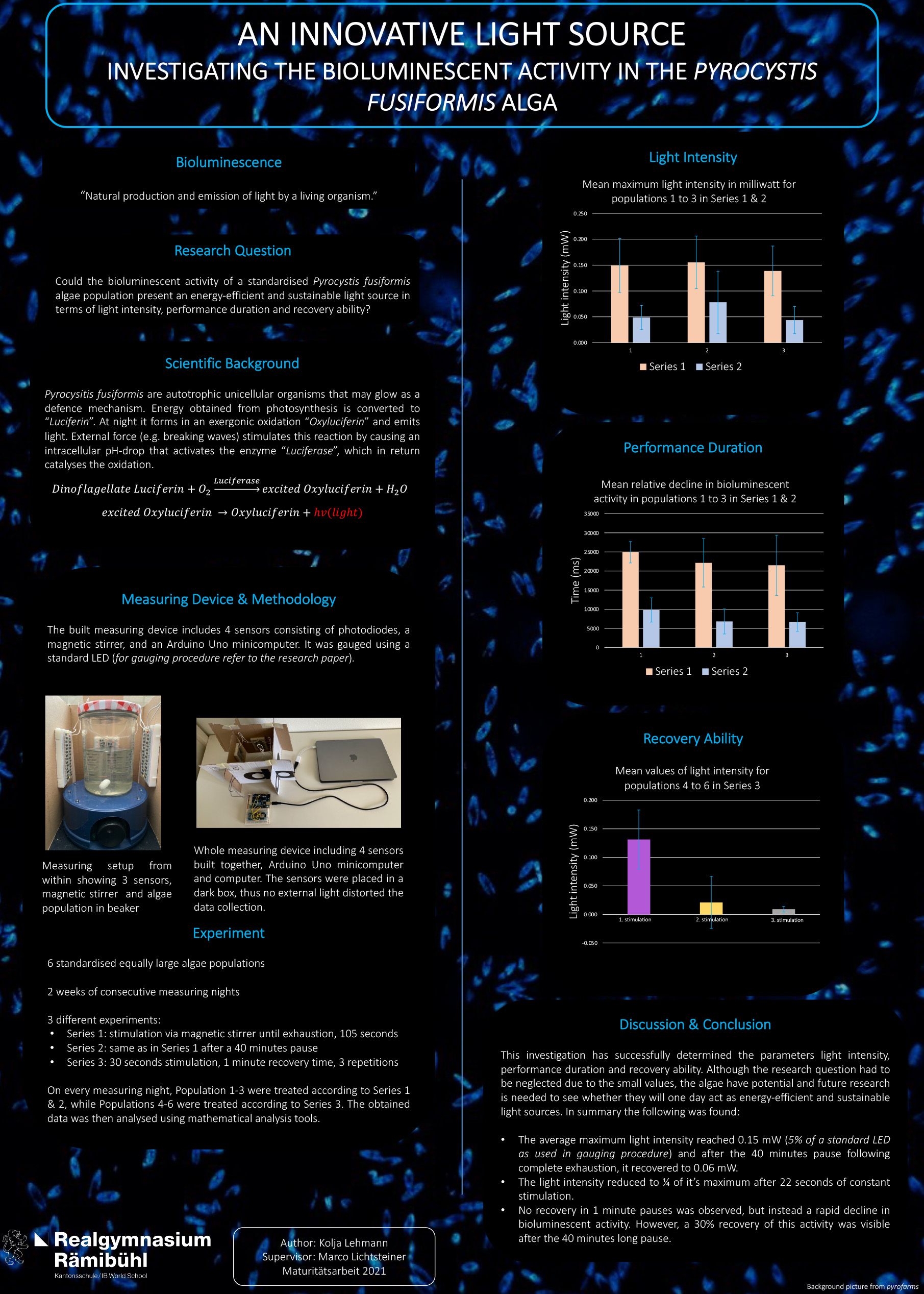2021
Autor/-in:
Lehmann Kolja
An Innovative Light Source
Investigating the bioluminescent activity in the Pyrocystis fusiformis alga
Marco Lichtsteiner
Kathy Lieb
RG Rämibühl
Fach: Biologie
Abstract
Climate change questions our energy consumption, and high expectations are in the field of sustainable light sources. In search of such sources with high outputs and minimal environmental costs, researchers have found the phenomenon of bioluminescence in organisms like the Pyrocystis fusiformis alga. This study investigated whether these algae present a persisting light source in terms of light intensity, performance duration and recovery ability. A self-designed measuring device involving light-sensitive photodiodes was used to analyse the stated parameters in six standardised algae samples over the course of two weeks. On average, an algae sample emitted light with a maximum intensity of 0.15 milliwatt at which structural changes in peripheral objects became visible. Their emission of detectable light lasted for around 22 seconds. Further, the study showed that the algae possess a fast recovery ability as they regained 30-40% of their initial light intensity during a recovery period of 40 minutes. Currently, the Pyrocystis fusiformis algae cannot be seen as an alternative light source because the measured parameters were too small to replace common lighting techniques. However, the study revealed the potential of Pyrocystis fusiformis, which encourages future research and innovation in this area.

